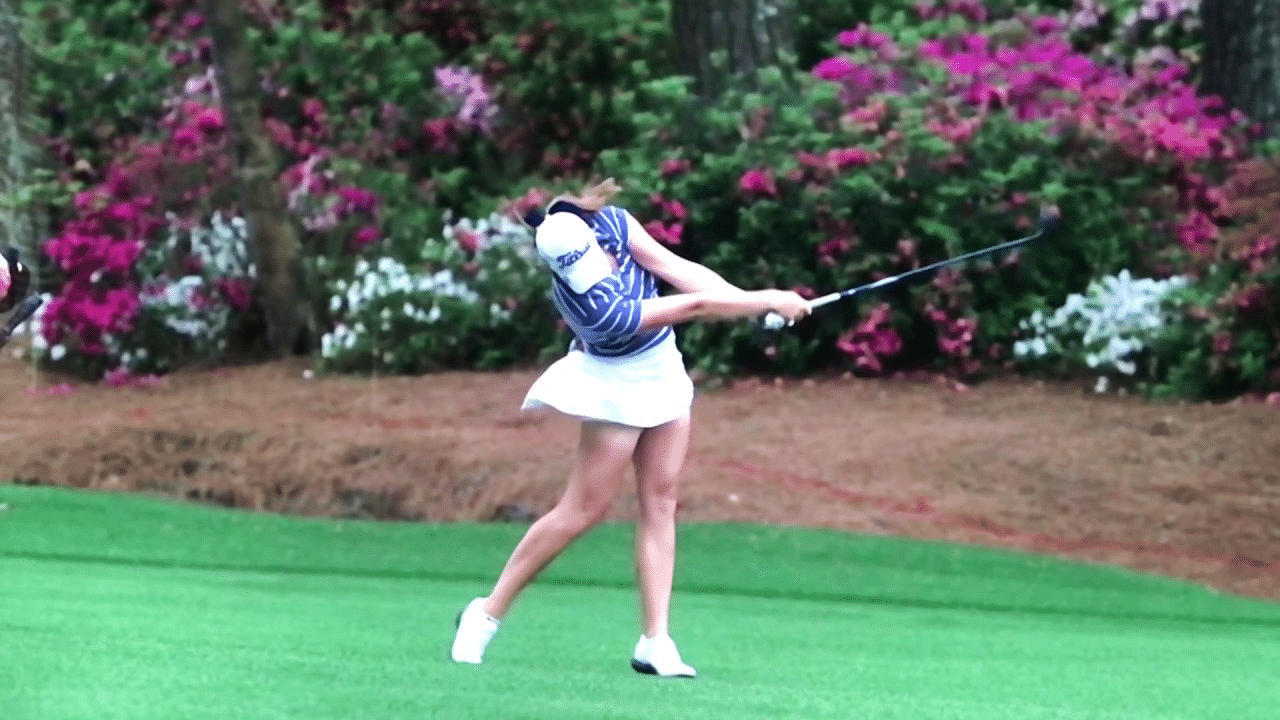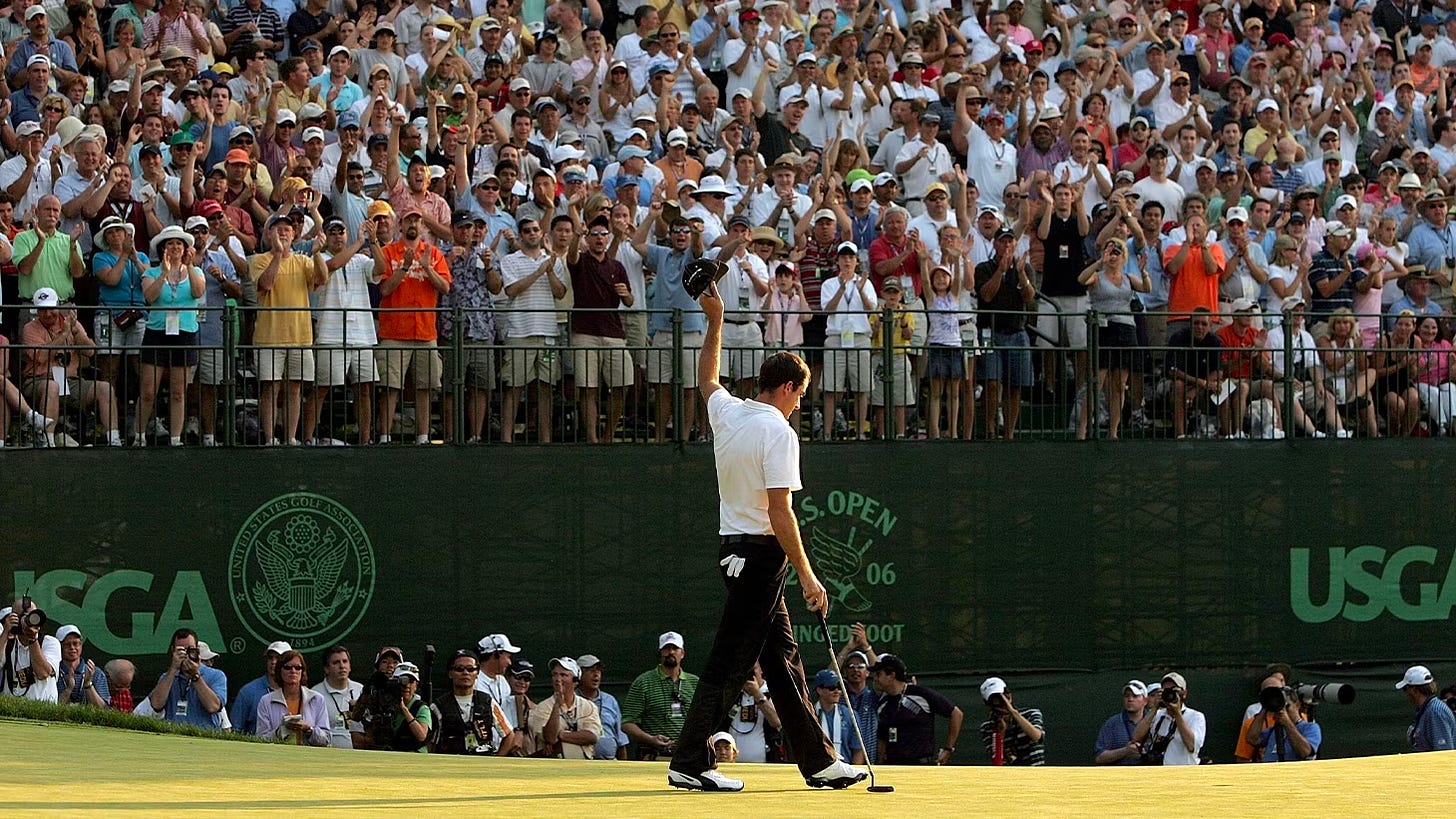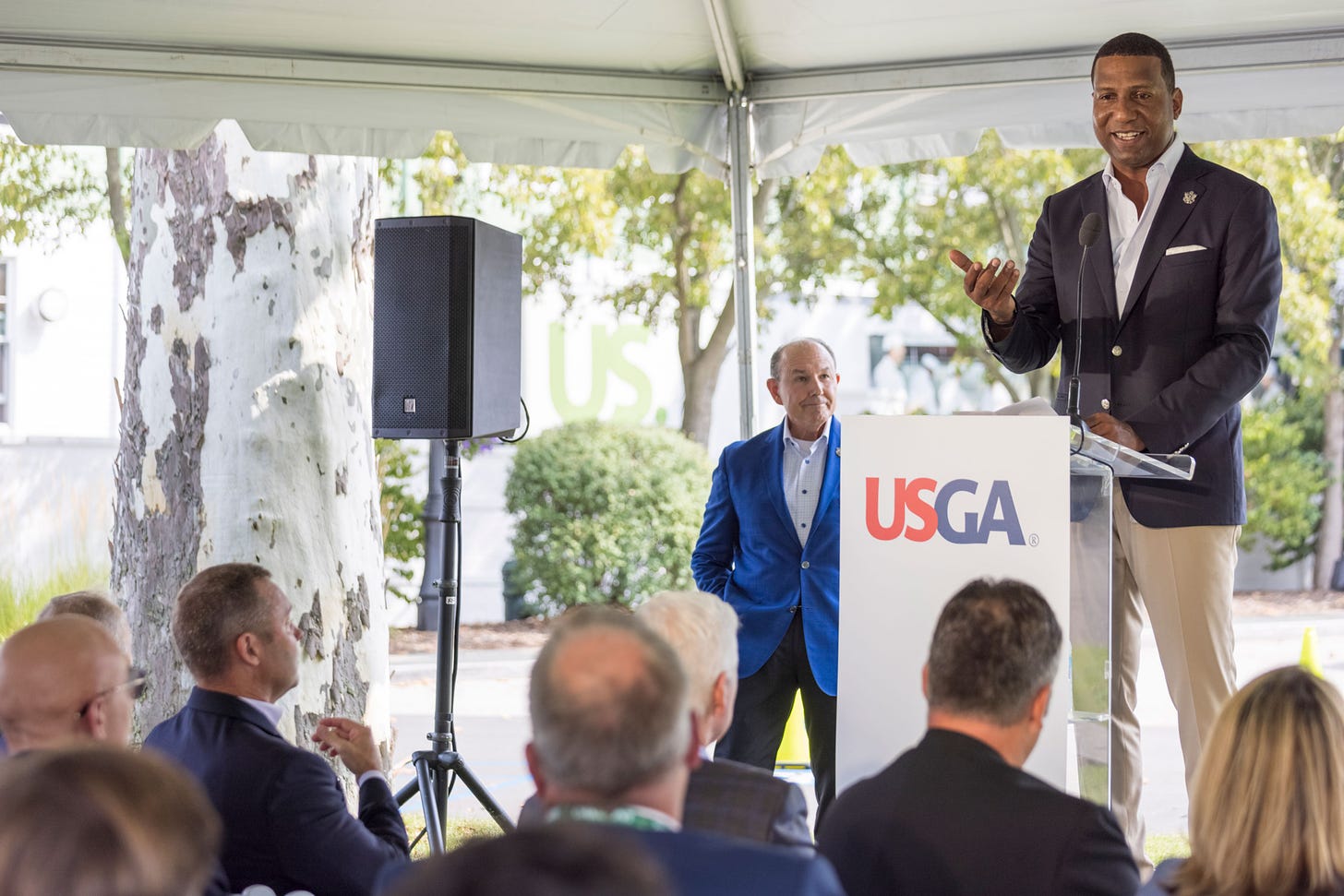Art Over Science
If you want evidence of why the ball needs to be rolled back at the highest level, watch how two events at Augusta National are contested in the coming days
Each year, when the women play Augusta National in the third and final round of the Augusta National Women’s Amateur, they play the course as its architects, Bobby Jones and Alister MacKenzie, intended it to play. They play a course that makes sense in every way, a course we can relate to, a course that invites people to take up this bewildering and beautiful walking game, a course that tests all 14 clubs, some of them used in a variety of ways.
The way Tiger Woods played golf and used the tools of his trade, it was as if he carried 40 clubs. That’s why Sean Foley, Tiger’s former swing coach, says that Woods would have won twice as many majors had there never been an equipment revolution in the years since Woods turned pro, in 1996.
The equipment revolution, with the launching of the Titleist ProV1 as an elemental part of it, has changed the fundamental nature of the course for the world’s best male golfers, nearly all of them touring pros who spend most of their waking hours sorting through the problems golf presents.
That is a tiny but influential population of golfers.
The competitors in the Augusta National Women’s Amateur are not part of that population. That’s why the event shows off the course so perfectly.
As a starting point, the green-to-tee walks are short. The women (and girls) won’t need a full minute to make it from the 12th green (in all its devilish glory) to the splendid isolation of the 13th tee. As the ANWA contestants play the course, you can tumble from green to tee all the way around, pretty much. Meanwhile, and this is fundamental to what makes a course, the par-5s are true par-5s and the long par-4s are true long par-4s.
That is golf.
When they tee it up next week at Augusta, Scottie Scheffler & Co. will need hiking boots and will play one par-5 per round.
For the ANWA contestants, who will have the stage on Saturday, the four par-5s are reachable in two—if you smash two shots. The downhill second is 500 yards. The uphill eighth is 470. The two iconic back-nine par-5s, 13 and 15, with greens protected by moats, are 450 yards and 470 yards. And if the women don’t reach, they will be playing shots that require exquisite finesse. Golf at its best is fiddly.
The women are playing a course that has four par-5s, four par-3s and 10 par-4s. Yes, a true par-72 course. For the 125 years that American golf has had great championships, courses have had one-shot holes, two-shot holes and three-shot holes.
Call me old-fashioned, but that is golf.
Even at 7,545 yards, Augusta National’s new length, the course will play as a par-69 in the Masters, at least for Scheffler and his ilk. The only true par-5 is the 8th, and even then some of the players will get home in two. The 13th, now all of 545 yards with an extra 35 yards tacked on to it this year, will be a driver and a mid-iron for Scheffler. That is, a par-4.
This is a long preamble to say this: The shorter-flying tournament ball that the USGA and the R&A are proposing for the best players in the world is a step in the right direction.
A tournament ball will help Golden Age courses like Augusta National–and Pebble Beach, the Old Course in St. Andrews, Oak Hill in Rochester, N.Y., the North course at the Los Angeles Country Club (site of this year’s U.S. Open), plus Merion, Colonial, Harbour Town and scores of others—maintain their relevance as playing fields for golf’s most important events.
A tournament ball for the four men’s Grand Slam events–if I had a magic wand I would add PGA Tour events–is a nod in the direction of sanity. The proposals are so modest that all they really do is hold the line, if that.
How can anybody say that golf is better on a 7,500-yard course than a 7,000-yard course?
How can anybody say that golf is better when a course has no true par-5s and no long par-4s?
How can anybody say they’d rather see a U.S. Open at Erin Hills or Chambers Bay—supersized modern courses—instead of Shinnecock Hills or Pebble Beach?
Golf needs new. New is the way of the world. Mankind would not survive without our impulse for innovation and improvement. Can you imagine a world without an electric garage-door opener? But a tournament ball would help courses including Riviera (where Tiger hosts an event each year), Bay Hill (site of the Arnold Palmer Invitational) and Muirfield Village (the venue for Jack Nicklaus’ Memorial tournament) maintain their place in the game without taking land by eminent domain to make them longer.
When the U.S. Open was at Erin Hills in 2017, a course almost devoid of trees and with fairways about as wide as a pee-wee football field, the course was 7,700 yards long. Brooks Koepka obliterated it. Three years later, Bryson DeChambeau did the same to Winged Foot. The way he played it, it had no angles. He deserves credit for solving the riddle, but the riddle was a less interesting one than the one Geoff Ogilvy solved there in 2006 (below). Ditto for Fuzzy Zoeller in 1984 and Hale Irwin in 1974.
It’s not too early to start thinking about the 2028 U.S. Open at Winged Foot.
When you get right down to it, golf requires four things: a course, a ball, clubs and people to play this odd cross-country game. All four elements are going to evolve, as they should. But for a game that has a rulebook as its bible, evolution has to be legislated. For too many decades, the USGA and the R&A did not have the stomach for the fight. Now both bodies are making up for lost time. Because the truth is, Augusta National would need to be more than 8,000 yards to test today’s players the way it tested Ben Hogan in the 1950s at 6,800 yards.
While we’re at it, let’s bury this pretentious word going around golf: bifurcation, splitting something into two parts. Golf, as the best players play it, is a cousin, but that is all, to the game the rest of us play. We use whatever ball that comes out of our bag. We change brands midround without a second thought. You pick up after making a triple. You pick up after your third putt. You’re playing match play. We mark and clean and aim-point in some sort of monkey-see, monkey-do fantasy. Our game is not their game. Please. We need to get over ourselves.
The average mid-handicap, middle-aged woman hits a driver about 150 yards. That means any hole over about 300 yards is essentially a par-5. They are playing courses that are way, way, way harder for them than the U.S. Open courses are for U.S. Open contestants. They are playing par-82 courses. Give them a much hotter ball and a much shorter course and watch interest in the game explode. Women (in my experience) are smarter than men. I have never heard a woman talk about bifurcation being an issue in golf.
Also, nobody is coming after your golf ball. Not in your club championship. Not in your after-work league. Not in your Sunday game. Not in NCAA play. The USGA and the R&A need to do a much better job of selling what this is:
course preservation. The preservation of the par-5. A dose of humility for a game and world that needs it.
I hope Fred Ridley, the Augusta National chairman, for the brief hour he takes center stage in the game on Wednesday, makes a powerful endorsement of a tournament ball. The USGA will almost surely have one for the U.S. Open. Ditto for the R&A at the British Open. If the Masters follows suit, then the PGA Championship most likely will, too. And if the four majors have a tournament ball, you can sell it to the players for PGA Tour play, too.
I’m surprised to see Titleist balking here. Titleist makes great, durable golf balls for every level of play and most budgets. No company is in a better place to take ownership of a new market that can emerge here. We (we the people) are still going to want to play the brand the best players play, even if the make and model are slightly different.
After the U.S. Open at Erin Hills, I asked two-time U.S. Open winner Lee Janzen how he felt about a tournament ball. He was in favor of it—as long as each manufacturer could make its own. That’s part of golf tradition. (In tennis, the players are given balls.) I think the players should be handed a game ball, but that will never happen. We all learn to pick our fights in this world. Pick them carefully and make sure you at least have a chance.
To those who say that top amateurs turning pro will struggle to adapt to the tournament ball, I say, if your guy can’t, another player will. The automaton give-me-the-numbers golfer is hurting the art of golf in favor of its science. The game has always been a balancing act—ask Arnold, Jack, Trevino, Seve, Tiger–but the art is more interesting than the science. Hale Irwin made that point in a persuasive way in a Need a Fourth podcast last month. Geoff Ogilvy was nodding all the while.
The Freds—Fred Perpall (below), the new president of the USGA, and Fred Ridley, a former USGA president—need to go on the offensive, explain the narrow goal here and why it is an important one for golf. They’re going to need help. Rory McIlroy is a good start. But they also need Tiger, the CEOs of Titleist and Bridgestone and Callaway, course designers and developers. This is a move in the direction of golfing sanity, modest in scope but with important long-run implications. LIV can do what it wants. This really has nothing to do with LIV, or the fact that golf is, quote, in a good place now. This is about Oakmont in 2025 and Pebble Beach in 2032. This is about golf’s Fenway Parks and its Lambeau Fields. It’s about keeping basketball rims 10 feet off the floor. It’s about maintaining traditional values.
Those are the values that got us here.
The author welcomes your comments at Bamberger@firepitcollective.com.





